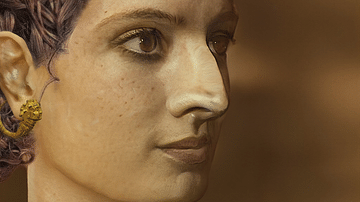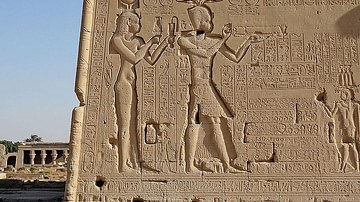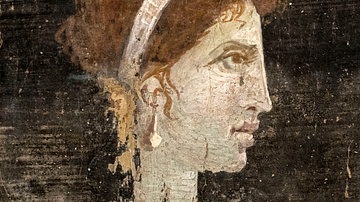Illustration
Coin portraits in particular show how Cleopatra wanted to be presented. Though varied in their facial features, her portraits emphasize her position of power as Ptolemaic queen.
Sculptural portrait attributed to Cleopatra (Gregorian Profane Museum, Vatican Museums, Rome, inv.no. 38511; CC BY-SA 4.0); Silver denarius with the diademed portrait of Cleopatra “Queen of Kings, and Sons of Kings” (Numismatica Ars Classica 106, 9-10 May 2018, lot 524); bronze 80-drachmae, struck in Alexandria (Triton V, 15 Jan 2002, lot 574); background relief scene depicting Cleopatra and her son Ptolemy Caesarion before the gods of Dendera, Upper Egypt (mirrored).
About the Author
Cite This Work
APA Style
Oppen, B. v. (2020, February 15). Cleopatra's Portraiture. World History Encyclopedia. Retrieved from https://www.worldhistory.org/image/11732/cleopatras-portraiture/
Chicago Style
Oppen, Branko van. "Cleopatra's Portraiture." World History Encyclopedia. Last modified February 15, 2020. https://www.worldhistory.org/image/11732/cleopatras-portraiture/.
MLA Style
Oppen, Branko van. "Cleopatra's Portraiture." World History Encyclopedia. World History Encyclopedia, 15 Feb 2020. Web. 16 Apr 2025.








